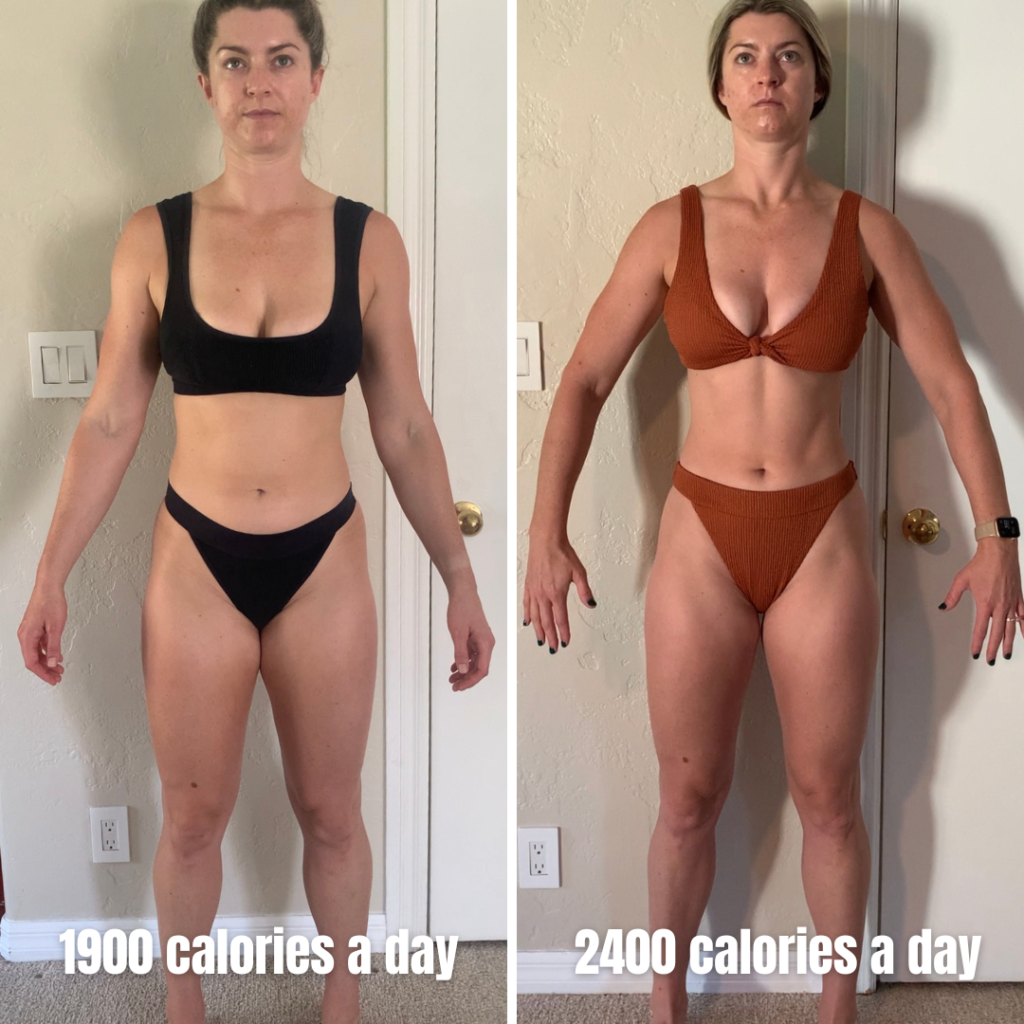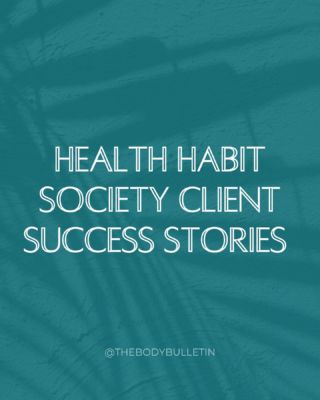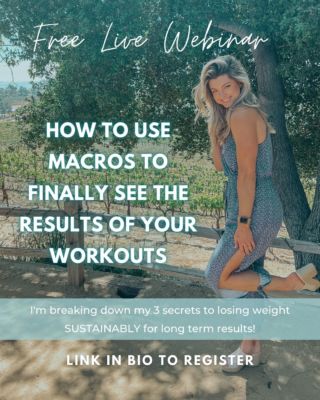
Is Reverse Dieting the Secret You’ve Been Missing?
Imagine this: you’ve been dieting for weeks, eating clean, working out, and watching the scale barely budge—or worse, it starts creeping up again. Frustrating, right? Now, picture a scenario where you’re eating more food while your clothes fit better, your energy skyrockets, and your workouts feel stronger than ever. It’s a cool nutrition method called reverse dieting. Sound too good to be true? Trust me, it’s not.
This is exactly what happened to me when I discovered reverse dieting, a powerful tool that helped me lose inches while increasing my daily calorie intake. And the best part? It’s not just me. Many of my clients have experienced similar transformations, proving that reverse dieting can be a game-changer.
Here’s a sneak peak:

In this post, I’ll share my reverse dieting journey—including jaw-dropping before-and-after results—and break down how you can leverage this strategy to supercharge your metabolism and achieve sustainable results. By the end, you’ll see why reverse dieting could be the missing piece in your fitness puzzle.
What is Reverse Dieting?
Reverse dieting is a strategic process of gradually increasing your calorie intake after a period of caloric restriction with balanced macros. It’s designed to help your body adapt to eating more food while minimizing fat gain, boosting your metabolism, and restoring your hormonal balance. Think of it as the antidote to the metabolic slowdown that often accompanies traditional dieting.
Here’s the science: when you’re in a calorie deficit, your body adapts by slowing your metabolism to conserve energy. This can lead to plateaus, fatigue, and even muscle loss.
Reverse dieting helps your metabolism adapt upward, allowing you to eat more while maintaining or even improving your physique.
In simpler terms, reverse dieting is like giving your metabolism a well-deserved tune-up. And the results? Better energy, improved muscle definition, and sustainable fat loss.
Why Should You Reverse Diet?
If you’ve ever felt stuck in a dieting rut or struggled to maintain your progress, reverse dieting might be exactly what you need. Here are some key reasons to consider a reverse diet:
1. Boost Your Metabolism
One of the biggest benefits of reverse dieting is its ability to increase your metabolic rate. By gradually increasing your calorie intake, you teach your body to burn more calories at rest, making it easier to maintain your weight and even lose fat in the long run.
2. Prevent Weight Regain
After a diet, it’s tempting to go back to your old eating habits. But this often leads to rapid weight gain, also known as “yo-yo dieting.” Reverse dieting provides a structured way to reintroduce calories, helping you maintain your hard-earned results. This is the #1 missed step and why so many diets “fail.”
3. Improve Your Relationship with Food
Let’s face it: restrictive dieting can make you feel deprived and obsessed with food. Reverse dieting allows you to enjoy more food without guilt, fostering a healthier and more sustainable approach to eating.
4. Enhance Performance and Recovery
If you’ve been feeling sluggish during workouts or struggling to recover, a reverse diet can help. With more calories comes more energy, better performance, and faster recovery times.
5. Balance Your Hormones
Prolonged calorie deficits can wreak havoc on your hormones, leading to issues like irregular periods, low libido, and poor sleep. Reverse dieting helps restore hormonal balance, improving your overall health and well-being.

Signs It’s Time to Reverse Diet
Not sure if you’re a candidate for reverse dieting? Here are some common signs that your body might benefit from a reverse:
- Low energy levels
- Difficulty recovering from workouts
- Sleep disturbances
- Constant food cravings or feeling “snacky”
- Mood swings or irritability
- Digestive issues like bloating or constipation
- Irregular or missing periods
- Frequent illnesses or weakened immune function
If any of these symptoms sound familiar, it might be time to give your metabolism the TLC it needs with a reverse diet.
My Journey: Reverse Diet Before and After
In September 2021, I decided to test reverse dieting for myself. At the time, I was eating around 1,800-2,000 calories a day and felt stuck. Despite my best efforts, I wasn’t seeing the results I wanted.
Most people in this situation would go down with their calories, but because I’d already done that many times.. That’s when I decided to reverse.
Over the next three months, I gradually increased my daily calorie intake by 400–500 calories. The results? Not only did I maintain my weight, but I also leaned out, gained muscle definition, and felt stronger and more energetic than ever.
Here’s a breakdown of my reverse diet:
- Starting calories: 1,900/day
- Ending calories: 2,400/day
- Inches lost: 4 inches (waist, hips, and thighs combined)
- Weight fluctuations: +3 lbs initially, followed by a 3-lb drop

I was shocked. I had always believed that eating more would lead to weight gain, but my reverse diet proved otherwise. It was a turning point in my fitness journey—and now, it’s a cornerstone of my coaching practice.
How to Start a Reverse Diet
Ready to try reverse dieting for yourself? Here’s a step-by-step guide to get started:
1. Determine Your Starting Point
Track your current calorie intake for a few days to establish your baseline. This is the number of calories you’re currently eating to maintain your weight.
2. Plan Your Caloric Increases
Begin by adding 50–100 calories to your daily intake each week. For example:
- Week 1: +50 calories/day
- Week 2: +100 calories/day (total of 1,650)
- Week 3: +150 calories/day (total of 1,700)
3. Monitor Your Progress
Track your weight, measurements, and how you feel. Don’t panic if the scale fluctuates—it’s normal. Focus on how your clothes fit and how your body feels.
4. Adjust as Needed
Continue increasing your calories until you reach a comfortable maintenance level or decide to pursue a new goal, such as muscle gain or fat loss.
Common Questions About Reverse Dieting
How do you start a reverse diet?
Start by tracking your current intake and gradually increasing your calories week by week.
Can reverse dieting help you lose weight?
While the scale might not always drop, many people lose inches as their metabolism improves and their body composition changes. In some cases I do have clients who continue to lose weight while in a reverse. In general, if you have less than 10 lbs to lose, you may not see weight drop in a reverse. If you have more weight to lose, you could..
When should you do a reverse diet?
Reverse dieting is ideal after a calorie deficit or if you’ve been eating below your maintenance calories for an extended period. It’s best for someone who wants to boost their metabolism.
Does reverse dieting cause weight gain?
Temporary weight fluctuations are normal, but significant weight gain is unlikely if you follow the process correctly. If you start gaining too much weight, you are likely tracking incorrectly and it’s time to work with a coach – click here.
Real-Life Client Success Stories
Here are just a few examples of how reverse dieting has transformed the lives of my clients:

Katy started reverse dieting after years of yo-yo dieting. She now eats more than ever, has increased her metabolism, and works out regularly. She has lost 12 inches in just 30 days, has more energy, and is seeing results from her workouts.

Jaimee a mom of 4, struggled with weight gain, limiting food during the week and found herself binging on the weekends. With reverse dieting, she learned how to properly fuel her body. She was able to lose 16 lbs and 16 inches.

Kristy worked out 6 days a week but struggled with weight fluctuations and confusion around food. She increased her daily calories through reverse dieting, helping her lose 5 lbs and shed over 12 inches while creating a sustainable, stress-free approach to eating and seeing real workout results.
Why Reverse Dieting Matters
For many, reverse dieting is the missing piece in their fitness journey. It restores metabolic health, improves hormonal balance, and helps you break free from restrictive dieting patterns.
If you’re tired of the endless dieting cycle and ready to achieve sustainable results, reverse dieting could be your ticket to a healthier, happier you.
Want to get started? Download my free Macros Checklist to learn how to track your intake and balance your meals like a pro.
Reverse dieting isn’t just about eating more—it’s about living more. Ready to transform your journey? Let’s do this! START HERE
Related Post: Counting Macros 101: A Step-By-Step Guide to Counting Macros for Fat Loss










Leave a Reply